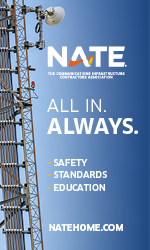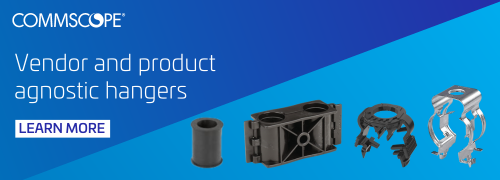
Strand Consult’s research found that in addition to false Open RAN CAPEX savings being touted, if Open RAN gets the success its proponents predict, it will account for less than one percent of the 5G mobile sites in 2025; not more than three percent in 2030. Dell’Oro Group projected last week that Open RAN will account for 15 percent to 20 percent of global RAN by 2027. Strand believes “it looks like Open RAN is too little, too late to make a difference in a world where operators are deploying 10,000 classic 5G sites every month.”
A fresh report from the well-respected research firm Dell’Oro Group states that the Open RAN (Radio Access Network) movement is being supported by stronger-than-expected O-RAN progress in North America. As a result, open RAN is now projected to account for 15 percent to 20 percent of global RAN by 2027.
The paid research shows that preliminary data suggests that Open RAN has a minimal impact on the overall RAN supplier dynamics.
Strand says Open RAN isn’t ready for prime time
Strand Consult, founded in 1995 and known for its ability to separate industry hype from facts, said in their 2023 predictions and 2022 telecom review that they were right about OpenRAN being more talk than implementation.
“We said that advocates like to talk about it but that mobile operators don’t buy it. In 2022 Parallel Wireless threw in the towel, and most experts agreed that OpenRAN is not ready for prime time,” Strand said.
Open RAN plugs itself as a panacea for carrier capital expenditure, given its use of disaggregated, industry-standard server platforms and software-defined functionality.
Strand has issued numerous reports dissecting Open RAN ‘hype’ versus objectivity.
In their 47-page free report, “Debunking 25 Myths of OpenRAN” Strand notes that many OpenRAN pronouncements sound too good to be true, citing claims it’s a technology that can reduce mobile operators’ infrastructure CAPEX and OPEX by 30-40 percent.
Strand says investors and other decision-makers want objective information about the latest mobile industry and not hype.
Firm’s concerns are shared by the House of Representatives Foreign Affairs Committee
Strand has examined the claims made by OpenRAN proponents and states that Strand has nothing against OpenRAN. However, they want to create transparency at the O-RAN Alliance, and some of its members have pushed back. They said their transparency concerns are shared by policymakers in the EU and US, notably the House of Representatives Foreign Affairs Committee.
In their report, Strand investigated the quality of the literature describing OpenRAN. It categorizes the 25 myths into six categories: security, competition, innovation, engineering, economics, and public policy.
Among the OpenRAN reports, articles, and investigations, there is little information that can be classified as empirical, scientific, or peer-reviewed, the company argues. They state that outside of a few exceptions, most materials are marketing/advocacy promoted by OpenRAN proponents or news/press releases/opinion pieces. The key shortcomings of the OpenRAN discussion include the following:
- Lack of objectivity and/or empirical support
- Preconceived notions, assumptions, and assertions about the economics of infrastructure, competition, and innovation
- Little to no discussion of the infrastructure value chain beyond the large infrastructure equipment providers
- Ignorance or failure to disclose that OpenRAN is not a technical standard. The O-RAN Alliance develops technical specifications for 4G, and 5G RAN internal functions and interface, not for 2G and 3G. The O-RAN Alliance is not a standards development organization (SDOs) like the 3GPP.
- Ignorance or failure to disclose that OpenRAN only supports 4G and 5G and, therefore, it is not a 1:1 commercial alternative for 5G networks. Moreover, OpenRAN does not support 2G, and 3G, the prevailing network generation in many developing countries, and yet OpenRAN is reported as a solution for developing countries.
- Ignorance or failure to disclose that 182 commercial 5G networks have been launched globally. These are classic RAN installations that support 2, 3, 4, and 5G in one base station. There is only one commercial OpenRAN installation, Rakuten, in Japan.
- Ignorance or failure to disclose how small expectations are for the OpenRAN install base by 2025 and 2030 compared to the entire market. This is likely just 1 percent in 2025 and under 3 percent in 2030.
- Ignorance or failure to disclose the role of Chinese vendors in the OpenRAN ecosystem and their leading role in the OpenRAN governance and specification setting.
Strand says the report “takes a critical view of the claims made about OpenRAN, including the claim that OpenRAN will stimulate the 5G service market. Strand Consult doesn’t believe OpenRAN will stimulate the 5G service market. We understand which services there will be in the core network and which in the cloud. The key problem for OpenRAN community is that they can’t explain which services are based on RAN that requires OpenRAN on a cell site to be implemented. And the OpenRAN community cannot tell us who will develop these OpenRAN-based services, who will sell them, what business models underlie these services, and whether they will address the corporate or consumer market. And they cannot tell us whether these services only be available on the few mobile sites where the operators have implemented OpenRAN, e.g., outside the big cities.”
Another Strand report, “The Moment of Truth: Is OpenRAN an alternative for emerging markets?” investigates the claims that OpenRAN will enable mobile operators to leapfrog mobile standards, connect the unconnected, and ensure a safe alternative to Chinese network equipment.
While the Open RAN movement is not confined to a specific technology, RF output power, spectrum band, or deployment configuration – Open RAN macros are expected to drive the lion’s share of the O-RAN CAPEX, accounting for around 90 percent of the revenues throughout the forecast period, Dell’Oro Group said in its report.
Editor’s Note: There is considerable confusion and ambiguity surrounding certain often-used Radio Access Network (RAN) terminology and acronyms. Last month, RedHat provided an informative article: What is open RAN?
















